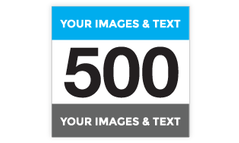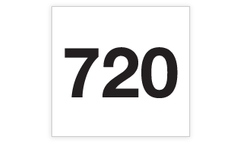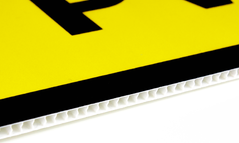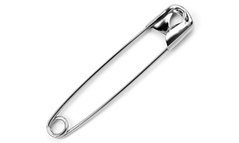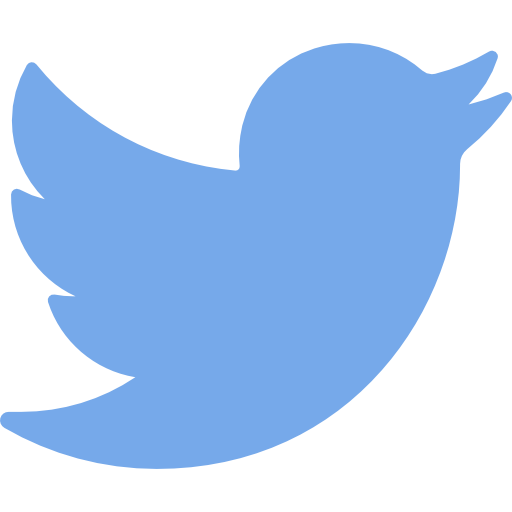You've got an event, you need top class numbers for your athletes, where do you start? Well, lucky for you, we've put together a handy little guide for your reference when putting together your numbers. Whether you're doing it via our design tool or coming to us directly, hopefully the following Top 10 Tips will help you on your number design journey.

Think about your materials (or ask us)
We know that every event is different, this is why we offer a selection of materials to choose from when printing your numbers.
Think about what you need your number to do. Does it need to be hard wearing? Waterproof? What will they be attached to? These are all questions we consider when helping our customers choose the right material for them.
For example, if you're hosting an indoor event where there may be stadium lighting, we would recommend a low glare material such as Firstron to ensure there are no problems viewing numbers.
Use logos, graphics & colour
If you’re not sure what to add to your numbers, have you considered if you’d like the event name to appear? Perhaps your logo, sponsors, or graphics? Consider things like colours. Are these specific per event, to your brand or are you looking to keep things simply black and white.
If you are adding logos and graphics, be sure to have these as high resolution as possible. Most formats will be fine, such as jpg, png, gif, pdf, eps or ai.
Step away from the edge (and corners)
There’s nothing worse than having a fantastic design but then having key information or sponsors getting cut off or hole punched through.
To stop this happening, we recommend keeping all logos / important artwork and key information, away from the corners as this is where the pins generally go. Also try to keep important info etc at least 7-10mm away from the edge to ensure that nothing is cut off when being trimmed.
Different bands, different info
Bands are a great way to separate areas of your event. For example if you have a 2k, 5k and 10k all on the same day. You can also use them to differentiate between different start zones, or distances etc.
They are also a great way to add a bit of colour or break up your design. Why not use different coloured bands behind your number or above and below it to give it that little bit extra.
Use contrast for maximum visibility
Before you start your design, think carefully about what your key information is. Are people going to need to see the number first or perhaps the name on the bib? Maybe the QR code is key for your event. Whatever it is, you need to make sure that it’s as large as possible and as bold as possible.
Contrast is key when designing your bib. For example if you have a white background, dark coloured information is the way forward, or if you have a darker background a light coloured number would work best to make sure it is clearly visible.
Discover the power of QR
Barcodes are becoming more and more commonly used on bib designs, making it easier for race timers to record entrant.s times during events, but have you considered also using QR codes? These can not only be used in the same way as barcodes but can also provide your athletes with key up-to-date information, before, during and after an event. Why not use them to link to a static webpage that enables you to update information about your event, giving key info on where people need to be, what times and what they can expect on the day. They’re also a great advertising tool, giving you the opportunity to get your message directly to your entrant.
Use a unique QR code printed on the number giving specific event details for the individual, in place of a letter, starter pack etc. The weblink information can be updated at any time, even after the number has been printed, giving the individual the latest information specific to them.
As mentioned in top tip 1, be sure to keep your QR codes and Barcodes near the centre of the number away from pins or the bottom edge, as this is often where entrants will fold the bottom of their number.
Make it personal
If you’re looking to add a more personal touch to your bibs, that could encourage your athlete to keep theirs as a memento of the day, why not consider adding their name, club name or a short personalised message?
We generally recommend no more than 13 characters for names, and to use capital letters. This keeps them all at a uniform height and maximises the size of the names on the bib, without any letters being cut off.
This also applies when you’re including variable data items such as race information or anything else that could be longer on your design. It's always a good idea to test the space you have with variable data of that length. Anything longer and you risk words becoming too small, being cut off or overlapping with other information.
Add t-shirts, offers, food orders & more
While we’re talking custom and variable, if you have something awesome you're offering your attendees of your event, perhaps special items like t-shirts, food orders or anything of that nature, we can add those too.
This makes it a lot easier on the day and gives clear info to your event teams, as well as entrants.
Add a baggage label
A popular choice for our race numbers is the use of a removable baggage labels. These are a great idea for people to add to their bags for easy retrieval, but can be used for a variety of other things, such as custom information, vouchers, advertising or keepsakes, just to name a few.
Having a detachable baggage label printed as part of the number also reduces fulfilling times and costs. It's a win win scenario.
Keep everyone safe
We all know how important it is to keep everyone safe during these events, so providing the right people with key medical and emergency contact details they can use during a race, if the worst should happen, is a great place to start.
It’s incredibly useful for first aiders and paramedics to be able to refer to an individual’s specific medical details, such as allergies, contact details of attendees who might be with an athlete and any special medical requirements.
We have a variety of set templates available for your use, or we can also print custom medical details on the reverse of your bibs.

